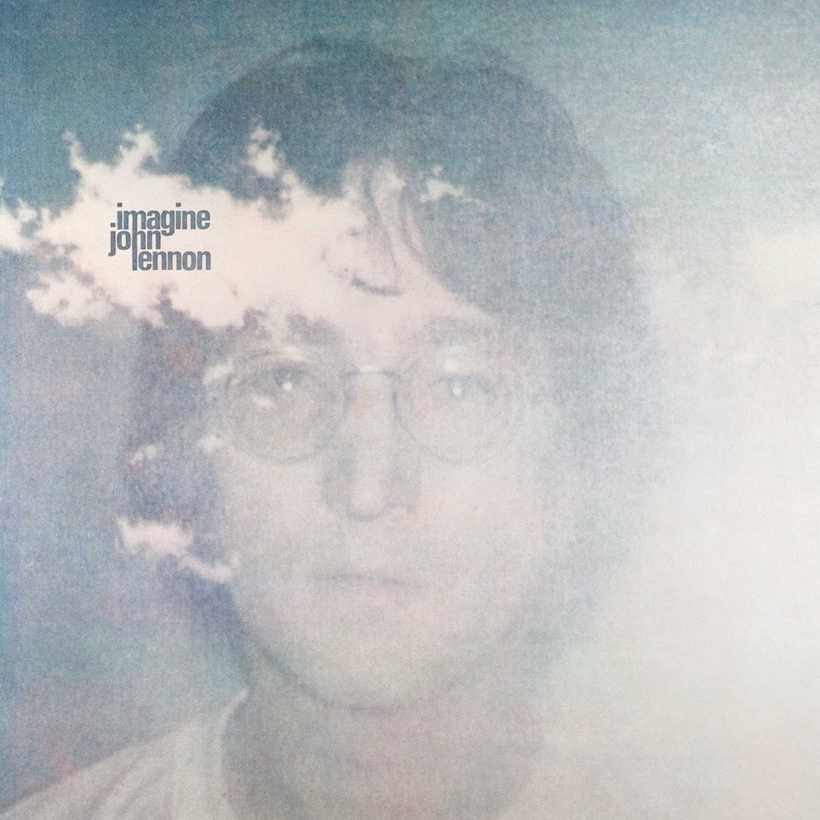Powerful, poignant, important, and beautiful are all words that describe Imagine – both the title song and the LP that was John Lennon’s second solo album release, in the autumn of 1971. One song does not make a great album, even when it is as seminal and defining as Imagine… and, make no mistake, this is a great album, full of brilliant songs, with great hooks. With John’s acerbic wit ever-present, though, the album never approaches the kind of music that John found irrelevant and meaningless.
John began work on the album that was to become Imagine a little over three months after finishing John Lennon/Plastic Ono Band. Recording his new album was done in three separate stages, the first between February 11 and 16, followed by another from May 24 to 28, before some final overdubs and mixing in New York over the 4th of July weekend. The earlier sessions were at Abbey Road and the May sessions were at the Lennon’s home studio at Tittenhurst Park, the New York sessions in July were at the Record Plant.
Imagine: The Ultimate Collection can be bought here.
Imagine is a very different album from the one that went before it, as John told David Sheff in 1980, “I call [Imagine] Plastic Ono with chocolate coating.” This record is more instantly accessible, but don’t let that fool you into thinking John had gone soft.
Like his previous album, Imagine has Yoko Ono’s influence all over it. None more so than in the brilliant title song. Yoko’s poetry, included in her 1964 book Grapefruit, helped inspire John’s lyrics for “Imagine,” and also influenced the cover of the album. Yoko’s poem “Cloud Piece” includes the lines: “Imagine the clouds dripping, dig a hole in your garden to put them in.” John later said “Imagine,” “should be credited to Lennon/Ono. A lot of it—the lyric and the concept—came from Yoko, but in those days I was a bit more selfish, a bit more macho, and I sort of omitted her contribution, but it was right out of Grapefruit.”
Just what is it that makes “Imagine” such a perfect recording? From the opening bars of John playing the piano, the song stakes its claim on our senses. The clever way the track is produced, to move the seemingly distant piano from the center to the full stereo pan helps to accentuate John’s plaintive, and vulnerable, vocal. The subtly beautiful strings, scored by Torrie Zito, play their part in making this song the very creative peak of John and Yoko’s working together.
IMAGINE. (Ultimate Mix, 2020) – John Lennon & The Plastic Ono Band (with the Flux Fiddlers) HD
Click to load video
The earlier sessions, at Abbey Road, took place during the recording of the single, “Power To The People” and because Ringo was unavailable, Jim Gordon from Derek and the Dominos was drafted in to play drums, along with Klaus Voormann on bass. “It’s So Hard” and “I Don’t Want To Be A Soldier,” were begun at the February sessions, with King Curtis adding his saxophone to the former in New York in July, while the latter song was substantially reworked at the May sessions. At Abbey Road, they also recorded Yoko’s “Open Your Box,” which became the b-side of “Power To The People.”
“It’s So Hard” has more of the pared-down Plastic Ono Band feel to it. It’s a 12 bar blues and the addition of Zito’s string arrangement (overdubbed at the Record Plant) along with King Curtis’s saxophone make it a more “traditional” song than most of what appears on John Lennon/Plastic Ono Band.
“I Don’t Want To Be A Soldier” was reworked at the May, Tittenhurst sessions, and aside from Lennon and Voormann, it features a much larger band including George Harrison on slide guitar, the brilliant Nicky Hopkins on piano, Joey Molland, and Tom Evans from Badfinger play acoustic guitars, drummer Jim Keltner and Alan White plays vibraphone; later in New York King Curtis added his saxophone flourishes. The song is one of Lennon’s simplest lyrical numbers but in simplicity there is power. The power is made even more significant by the hypnotic music that is both relentless and persuasive. Zito’s strings are again a superb addition to the whole feel of the song.
In the five days at Tittenhurst, in addition to “I Don’t Want To Be A Soldier,” John and the assembled musicians recorded “Crippled Inside,” “Jealous Guy,” “Gimme Some Truth,” “Oh My Love,” “How Do You Sleep?,” “How?,” “Oh Yoko!,” and the album’s title track. George plays some great dobro on “Crippled Inside” and it is further enhanced by some trademark “diamond trills” from Nicky Hopkins on the piano. The spirit in which this record was made was helped by recording so much of it at John and Yoko’s home. It feels personal and, with the Lennons again producing it with help from Phil Spector, it heightens the sense of intimacy.
“Jealous Guy” has become one of John’s best-known songs, helped in no small part by it having been covered by Roxy Music in early 1981 and taken to No.1 on the UK charts. The song had its beginnings in India in 1968 before its full flowering when John rewrote the lyrics.
John Lennon – Imagine (original demo)
Click to load video
Acerbic and political, “Gimme Some Truth” highlights John’s way with words and succinctly sums up so much of what made John tick. John, always ahead of his time, tackles the question of political leadership – just as relevant today as in 1971. This song foreshadows what would follow in John’s songwriting over the coming years.
“Oh My Love” is a beautiful and tender song, enhanced by George’s delicate guitar playing and John and Yoko’s wonderful words. From tenderness to harsh reality with “How Do You Sleep?,” arguably the most notorious song on the album. Often described as John’s attack on Paul, it is best explained by John himself.
“It’s not about Paul, it’s about me. I’m really attacking myself. But I regret the association, well, what’s to regret? He lived through it. The only thing that matters is how he and I feel about these things and not what the writer or commentator thinks about it. Him and me are okay.”
And then it’s immediately back to the soft side of John with “How?” While it would be lyrically at home on his previous LP, its production is definitely of the “chocolate coating” variety. The album’s final song is the uplifting and beautiful “Oh Yoko!” A simple song, but one that is simply lovely. Phil Spector sings the harmony and, at the time of the album’s release, EMI wanted to put it out as a single. John refused. If he hadn’t, it would have been a massive hit. It’s a song that just draws you in and makes you feel good. And isn’t that what music should do? Sometimes. It should also make you think, question, and, of course, fill you with joy. Imagine does all these things and much more.
Imagine: The Ultimate Collection can be bought here.



